How To Draw A Damn Fine Ass Top Image, Row 5 & 6 Row 2: Drawing People By Barbara Bradley Row 3 Row 4
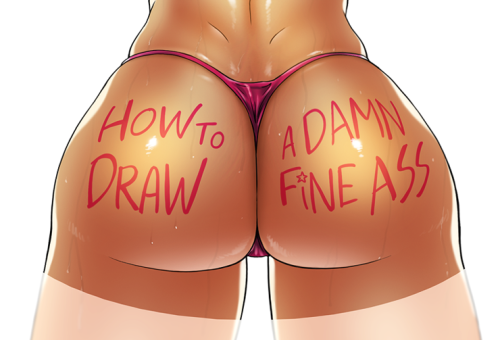

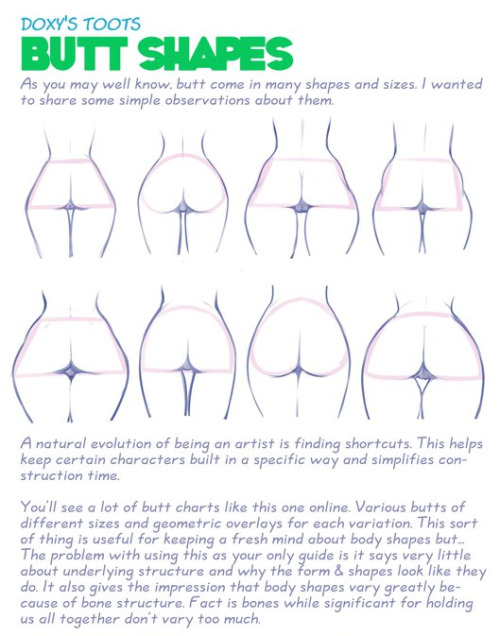

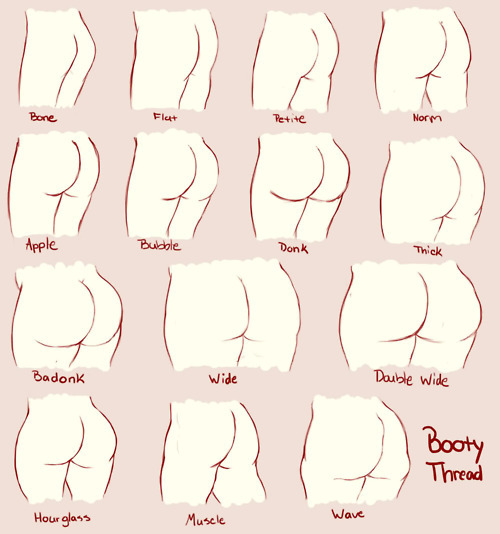


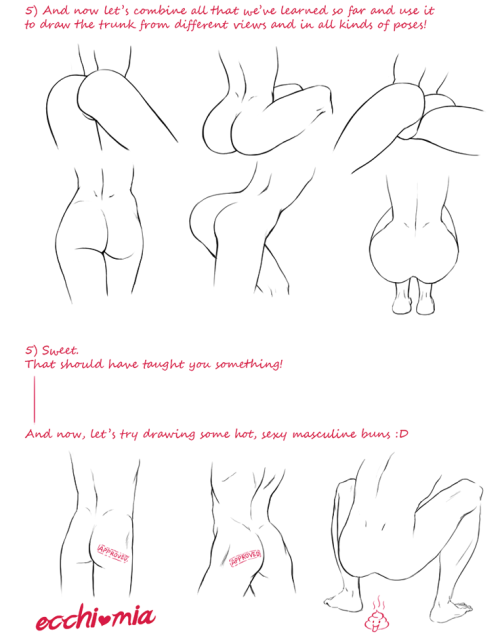
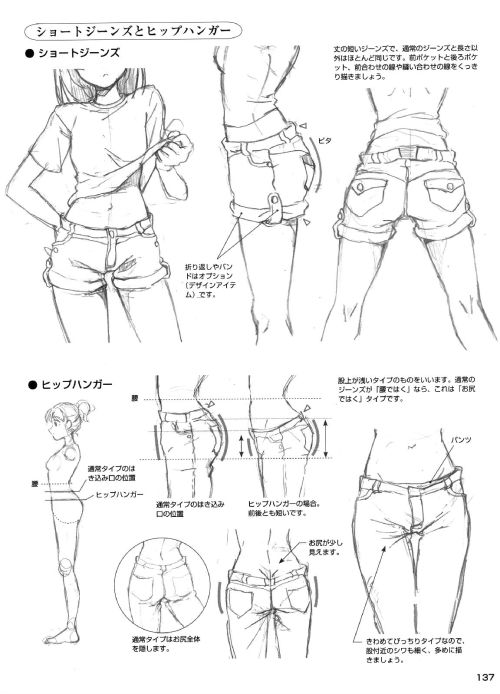
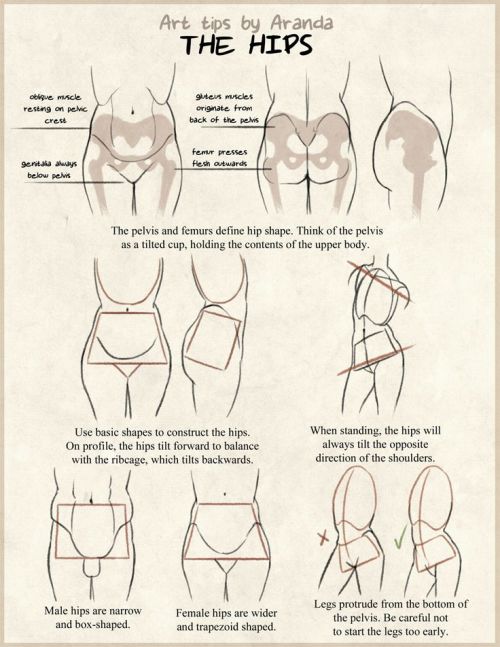
How to Draw a Damn Fine Ass Top Image, Row 5 & 6 Row 2: Drawing People by Barbara Bradley Row 3 Row 4 Row 5 Bottom Image
More Posts from Risingstarling and Others
How to Write a Novel: Tips For Visual Thinkers.
1. Plotting is your friend.
This is basically a must for all writers (or at least, it makes our job significantly easier/less time consuming/less likely to make us want to rip our hair out by the roots), but visual thinkers tend to be great at plotting. There’s something about a visible outline that can be inexplicably pleasing to us, and there are so many great ways to go about it. Here are a few examples:
The Three-Act Structure
This one is one of the simplest: it’s divided into the tried-and-true three acts, or parts, a la William Shakespeare, and includes a basic synopsis of what happens in each. It’s simple, it’s familiar, it’s easy to add to, and it get’s the job done.
It starts with Act I – i.e. the set-up, or establishing the status quo – which is usually best if it’s the shortest act, as it tends to bore audiences quickly. This leads to Act II, typically the longest, which introduces the disruptor and shows how characters deal with it, and is sandwiched by Act III (the resolution.)
The Chapter-by-Chapter
This is the one I use the most. It allows you to elucidate on the goings on of your novel in greater detail than the quintessential three act synopsis generally could, fully mapping out your manuscript one chapter at a time. The descriptions can be as simple or as elaborate as you need them to be, and can be added to or edited throughout the progression of your novel.
Can easily be added to/combined with the three-act structure.
The Character Arc(s)
This isn’t one that I’ve used a lot, but it can be a lot of fun, particularly for voice-driven/literary works: instead on focusing on the events of the plot, this one centralizes predominantly around the arc of your main character/characters. As with its plot-driven predecessors, it can be in point-by-point/chapter-by-chapter format, and is a great way to map out character development.
The Tent Moments
By “tent moments,” I mean the moments that hold up the foundation (i.e. the plot) of the novel, in the way that poles and wires hold up a tent. This one builds off of the most prevalent moments of the novel – the one’s you’re righting the story around – and is great for writers that want to cut straight to the action. Write them out in bullet points, and plan the rest of the novel around them.
The Mind Map
This one’s a lot of fun, and as an artist, I should probably start to use it more. It allows you to plot out your novel the way you would a family tree, using doodles, illustrations, and symbols to your heart’s content. Here’s a link to how to create basic mind maps on YouTube.
2. “Show don’t tell” is probably your strong suit.
If you’re a visual thinker, your scenes are probably at least partially originally construed as movie scenes in your head. This can be a good thing, so long as you can harness a little of that mental cinematography and make your readers visualize the scenes the way you do.
A lot of published authors have a real big problem with giving laundry lists of character traits rather than allowing me to just see for myself. Maybe I’m spoiled by the admittedly copious amounts of fanfiction I indulge in, where the writer blissfully assumes that I know the characters already and let’s the personalities and visuals do the talking. Either way, the pervasive “telling” approach does get tedious.
Here’s a hypothetical example. Let’s say you wanted to describe a big, tough, scary guy, who your main character is afraid of. The “tell” approach might go something like this:
Tommy was walking along when he was approached by a big, tough, scary guy who looked sort of angry.
“Hey, kid,” said the guy. “Where are you going?”
“I’m going to a friend’s house,” Tommy replied.
I know, right? This is Boring with a capital ‘B.’
On the other hand, let’s check out the “show” approach:
The man lumbered towards Tommy, shaved head pink and glistening in the late afternoon sun. His beady eyes glinted predatorily beneath the thick, angry bushes of his brows.
“Hey, kid,” the man grunted, beefy arms folded over his pot belly. “Where are you going?”
“I’m going to a friend’s house,” Tommy replied, hoping the man didn’t know that he was ditching school.
See how much better that is? We don’t need to be told the man is big, tough, and scary looking because the narrative shows us, and draws the reader a lot more in the process.
This goes for scene building, too. For example:
Exhibit A:
Tyrone stepped out onto his balcony. It was a beautiful night.
Lame.
Exhibit B:
Tyrone stepped out onto his balcony, looking up at the inky abyss of the night sky, dotted with countless stars and illuminated by the buttery white glow of the full moon.
Much better.
3. But conversely, know when to tell.
A book without any atmosphere or vivid, transformative descriptors tends to be, by and large, a dry and boring hunk of paper. That said, know when you’re showing the reader a little too much.
Too many descriptors will make your book overflow with purple prose, and likely become a pretentious read that no one wants to bother with.
So when do you “tell” instead of “show?” Well, for starters, when you’re transitioning from one scene to the next.
For example:
As the second hand of the clock sluggishly ticked along, the sky ever-so-slowly transitioning from cerulean, to lilac, to peachy sunset. Finally, it became inky black, the moon rising above the horizon and stars appearing by the time Lakisha got home.
These kind of transitions should be generally pretty immemorable, so if yours look like this you may want to revise.
Day turned into evening by the time Lakisha got home.
See? It’s that simple.
Another example is redundant descriptions: if you show the fudge out of a character when he/she/they are first introduced and create an impression that sticks with the reader, you probably don’t have to do it again.
You can emphasize features that stand out about the character (i.e. Milo’s huge, owline eyes illuminated eerily in the dark) but the reader probably doesn’t need a laundry list of the character’s physical attributes every other sentence. Just call the character by name, and for God’s sake, stay away from epithets: the blond man. The taller woman. The angel. Just, no. If the reader is aware of the character’s name, just say it, or rework the sentence.
All that said, it is important to instill a good mental image of your characters right off the bat.
Which brings us to my next point…
4. Master the art of character descriptions.
Visual thinkers tend to have a difficult time with character descriptions, because most of the time, they tend to envision their characters as played their favorite actors, or as looking like characters from their favorite movies or TV shows.
That’s why you’ll occasionally see characters popping up who are described as looking like, say, Chris Evans.
It’s a personal pet peeve of mine, because A) what if the reader has never seen Chris Evans? Granted, they’d probably have to be living on Mars, but you get the picture: you don’t want your readers to have to Google the celebrity you’re thirsting after in order for them to envision your character. B) It’s just plain lazy, and C) virtually everyone will know that the reason you made this character look like Chris Evans is because you want to bang Chris Evans.
Not that that’s bad or anything, but is that really what you want to be remembered for?
Now, I’m not saying don’t envision your characters as famous attractive people – hell, that’s one of the paramount joys of being a writer. But so’s describing people! Describing characters is a lot of fun, draws in the reader, and really brings your character to life.
So what’s the solution? If you want your character to look like Chris Evans, describe Chris Evans.
Here’s an example of what I’m talking about:
Exhibit A:
The guy got out of the car to make sure Carlos was alright, and holy cow, he looked just like Dean Winchester!
No bueno. Besides the fact that I’m channeling the writing style of 50 Shades of Grey a little here, everyone who reads this is going to process that you’re basically writing Supernatural fanfiction. That, or they’ll have to Google who Dean Winchester is, which, again, is no good.
Exhibit B:
The guy got out of the car to make sure Carlos was alright, his short, caramel blond hair stirring in the chilly wind and a smattering of freckles across the bridge of his nose. His eyes were wide with concern, and as he approached, Carlos could see that they were gold-tinged, peridot green in the late afternoon sun.
Also note that I’m keeping the description a little vague here; I’m doing this for two reasons, the first of which being that, in general, you’re not going to want to describe your characters down to the last detail. Trust me. It’s boring, and your readers are much more likely to become enamored with a well-written personality than they are a vacant sex doll. Next, by keeping the description a little vague, I effectively manage to channel a Dean Winchester-esque character without literally writing about Dean Winchester.
Let’s try another example:
Exhibit A:
Charlotte’s boyfriend looked just like Idris Elba.
Exhibit B:
Charlotte’s boyfriend was a stunning man, eyes pensive pools of dark brown amber and a smile so perfect that it could make you think he was deliciously prejudiced in your favor. His skin was dark copper, textured black hair gray at the temples, and he filled out a suit like no other.
Okay, that one may have been because I just really wanted to describe Idris Elba, but you get the point: it’s more engaging for the reader to be able to imagine your character instead of mentally inserting some sexy fictional character or actor, however beloved they may be.
So don’t skimp on the descriptions!
5. Don’t be afraid to find inspiration in other media!
A lot of older people recommend ditching TV completely in order to improve creativity and become a better writer. Personally, if you’ll pardon my French, I think this is bombastic horseshit.
TV and cinema are artistic mediums the same way anything else is. Moreover, the sheer amount of fanart and fanfiction – some of which is legitimately better than most published content – is proof to me that you can derive inspiration from these mediums as much as anything else.
The trick is to watch media that inspires you. I’m not going to say “good media” because that, in and of itself, is subjective. I, for example, think Supernatural is a fucking masterpiece of intertextual postmodernism and amazing characterization, whereas someone else might think it’s a hot mess of campy special effects and rambling plotlines. Conversely, one of my best friends loves Twilight, both the movies and the books, which, I’m going to confess, I don’t get at all. But it doesn’t matter that it isn’t good to me so long as it’s good to her.
So watch what inspires you. Consume any whatever movies, books, and shows you’re enthusiastic about, figure out what you love most about them, and apply that to your writing. Chances are, readers will find your enthusiasm infectious.
As a disclaimer, this is not to say you get a free pass from reading: I’ve never met a good writer who didn’t read voraciously. If you’re concerned that you can’t fall in love with books the way you used to (which, sadly, is a common phenomenon) fear not: I grappled with that problem after I started college, and I’ll be posting an article shortly on how to fall back in love reading.
So in the meanwhile, be sure to follow my blog, and stay tuned for future content!
(This one goes out to my friend, beta reader, and fellow writer @megpieeee, who is a tremendous visual thinker and whose books will make amazing movies someday.)
Hi! I want to draw people with a lot of emotion captured, but I don't really know how to do it so that the viewer feels something. I want to show more emotion, I guess? (This was really unclear, I know :0) Thank you so much!
What a great question, @everchangingotps!
I think studying anatomy helps a lot. Facial muscles are a bit complex, and they move in different ways to make the frowns and smiles happen!
Here’s a few great resources I found:
Human Anatomy Fundamentals, Mastering facial Expressions - super comprehensive. Definitely worth the read!
Muscles of Facial Expression - Anatomyzone
Drawing facial expressions - Xia Taptara on Youtube
Folder of Facial Expression Tutorials! Super useful
Expression tutorial by shingworks - cartoon style
If you liked this post, please consider reblogging this post so more artists can see it!
Also it would mean the world to me if you checked out my art at @astrikos!
Thank you for your continued support!

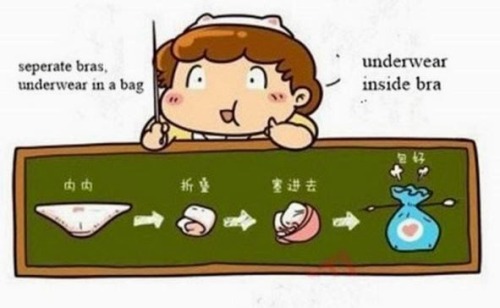
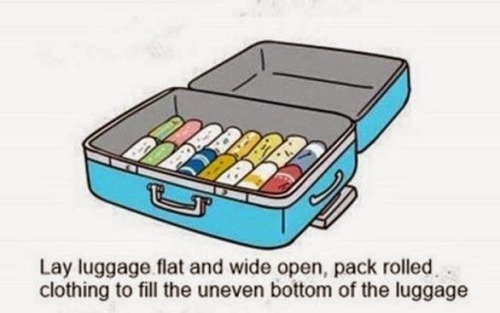
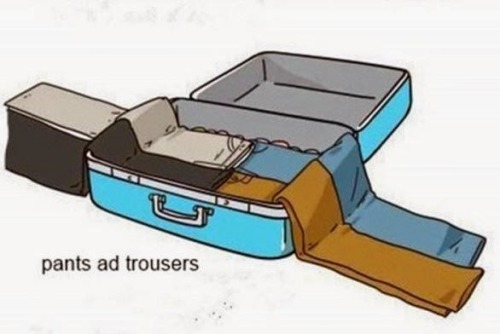
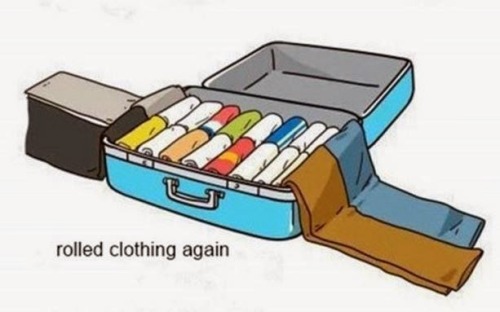
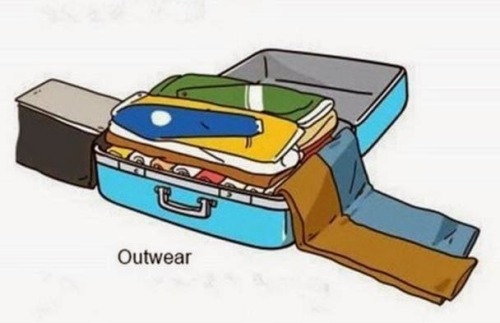
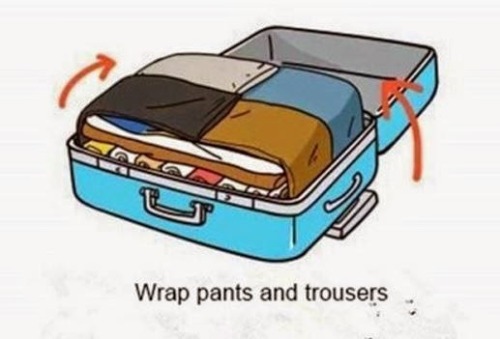
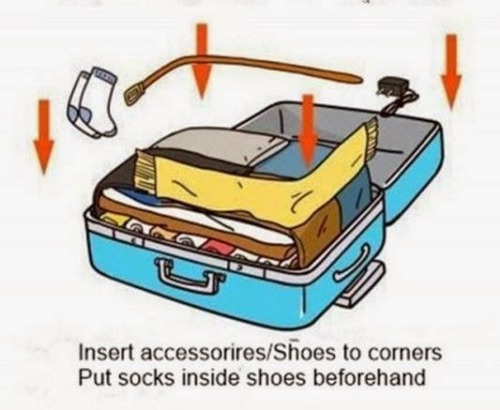

How to Pack Luggage?






Ciel naming Sebastian (.◜ω◝.)
**Please do not reupload here/on other sites**
Singing Tip #4
Learn how to properly pronounce dipthongs when singing. A dipthong is a word that has one vowel, but two vowel sounds.
For example, “light” . It only has one vowel (I) but if you say it slowly you’ll hear that you pronounce it as “ah- eet” .
So when you’re singing, if you have to hold a note on the word “light” you need to be aware that it’s a dipthong. So instead of holding the “I” as “iiiiiiiiii” you should hold the “aaaaaaahhhhh” and then right as you stop, finish with the “eet” sound.
Holding the wrong vowel and under enunciating words can take away from the quality of your voice and leads to a bad performance.

Body Language Is More Revealing Than Words: How to Read People More Clearly
Our bodies can often be more honest than our words when it comes to communicating our thoughts, feelings, and intentions.
When we choose what to say, we’re often using the executive parts of our brains (the “neocortex”). This part of the brain is responsible for conscious attention, language, and thinking, all of which we have a degree of control over with some effort.
Because we have a choice in what we say, this makes it easier to conceal, deceive, and lie with our words.
However, we don’t usually choose our body language, which comes from the automatic parts of our brains (the “limbic system”). This part of the brain is responsible for our emotions, instincts, and gut reactions, all of which we don’t normally have control over.
According to What Every Body Is Saying: An Ex-FBI Agent’s Guide to Speed-Reading People, because our body language is more automatic than our speech, this makes it harder to conceal, deceive, and lie about our true thoughts and feelings through our bodies.
Therefore, if you want to learn how to better read people and understand what’s going on inside their minds, you need to listen more to what their bodies are communicating to you. Especially if it doesn’t match up with what they are saying.
Most of us know how to choose our words carefully. We are taught from an early age how to act polite and kind even when we don’t want to – or how to tell a harmless lie to protect someone’s feelings (“Thanks for the birthday gift! I always wanted socks!”)
However, we don’t often pay attention to what our body language is communicating. And because it happens automatically without us deliberately choosing, it’s harder to override how our body responds to a situation. Our bodies rarely lie.
In this article, I will share basic guidelines on what to look for in body language. This can also be a valuable resource in learning what your own body is communicating to others, perhaps without you even realizing it.
Click here to read more
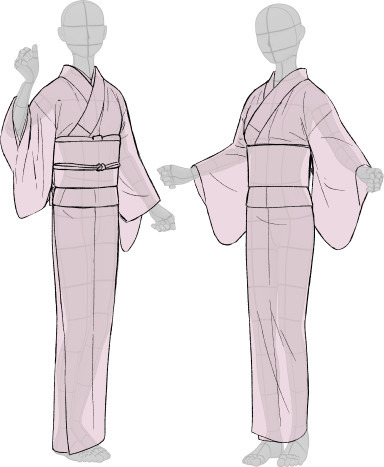
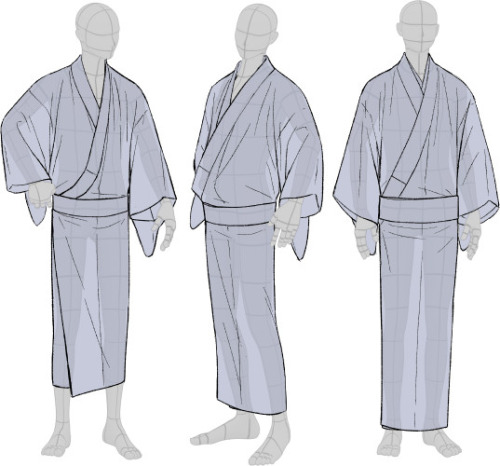
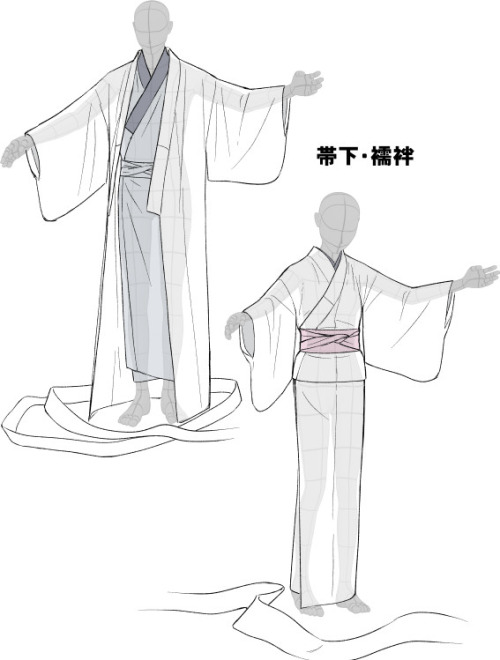
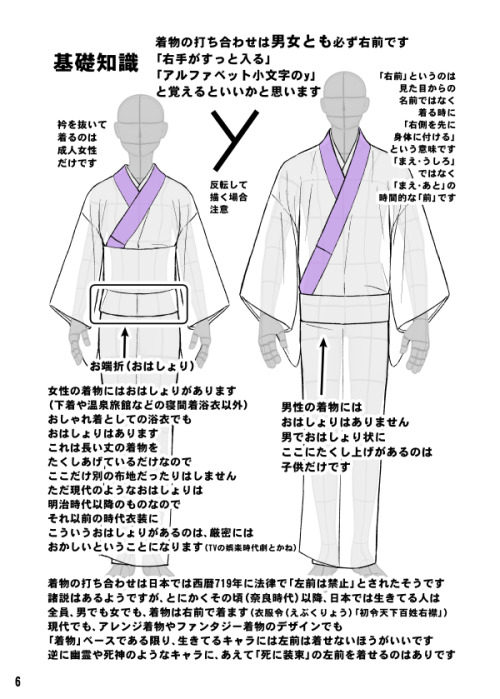
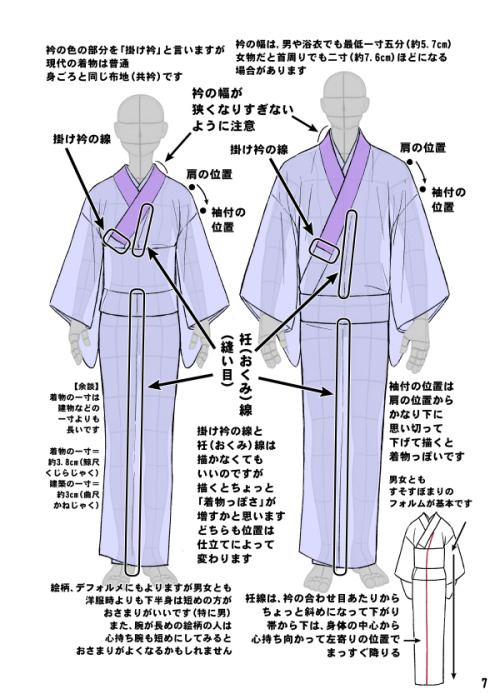
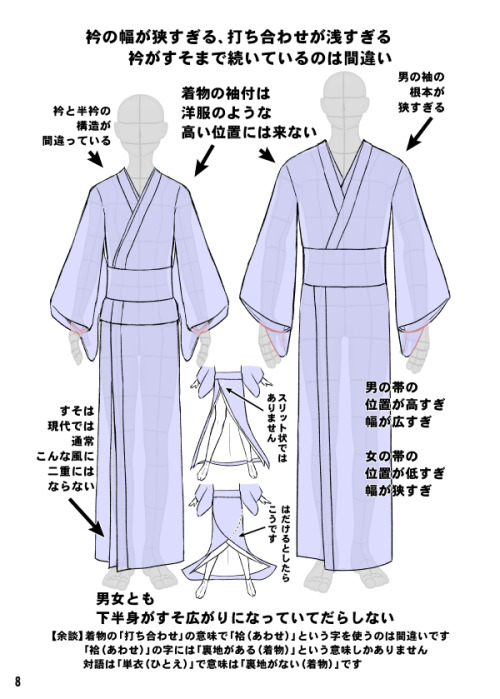
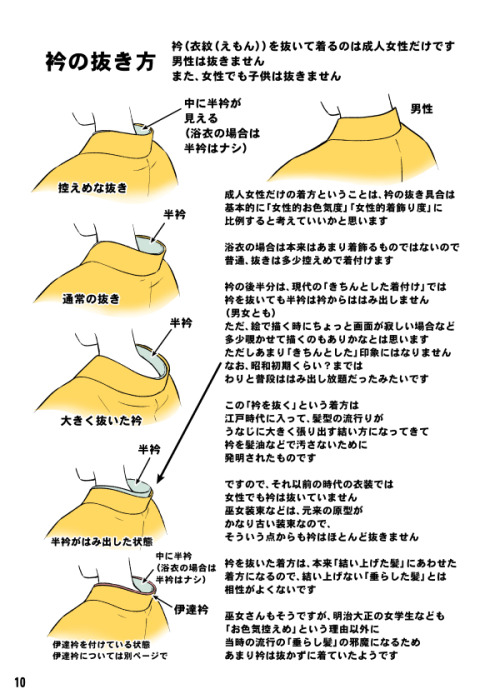

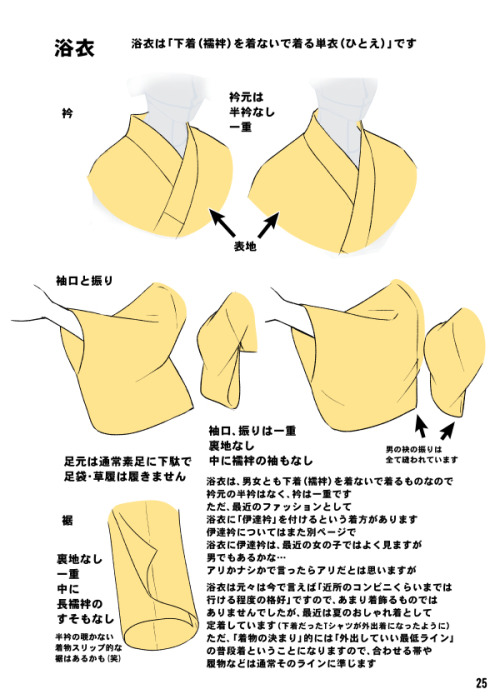
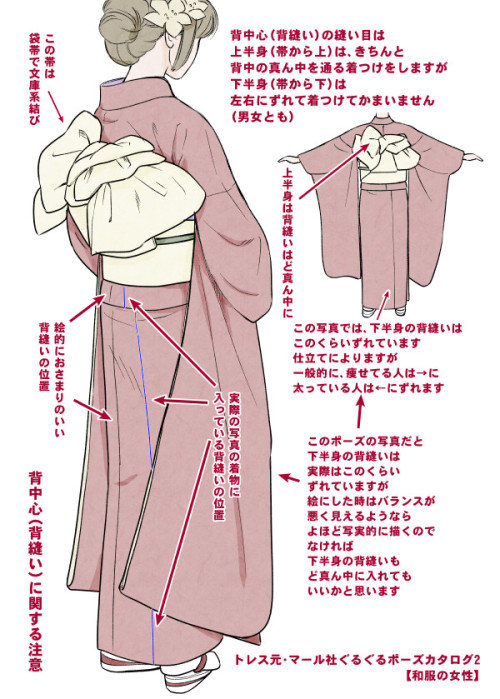
Kimono drawing guide ½, by Kaoruko Maya (tumblr, pixiv, site). Booklet is available in pdf for ¥ 900 here.
Here you can see:
female kimono and yukata (note how the juban underwear peeks when in kimono + how belts differ)
male yukata and kimono (note how the juban underwear peeks when in kimono)
dressing up: male (kimono is not closed yet) and female (kimono closed with datejime belt and ready to put on obi)
differences between female and male kimono once dressed (note how the collars and belts set)
common drawing mistakes (compare with previous picture: shoulders lines are too defined, there is a double hem, collars are narrow, belt is not at the right place etc)
women back collar (the lower the sexier) and men back collar (close to the nape)
back and sleeves differences between men and women
collars and sleeves and view of how kimono drapes around body
Furisode back (long sleeves kimono) and formal furisode obi knot example



http://sevencamels.blogspot.ca/2008_12_01_archive.html
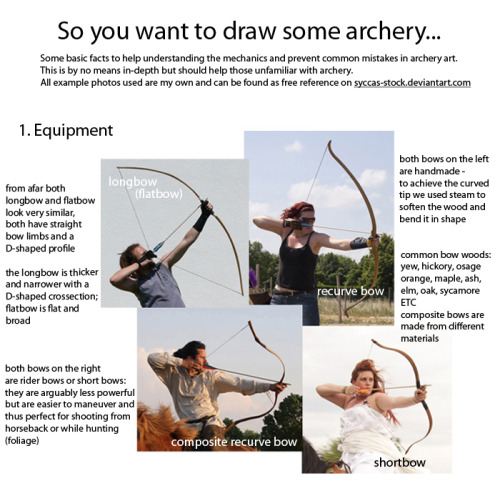
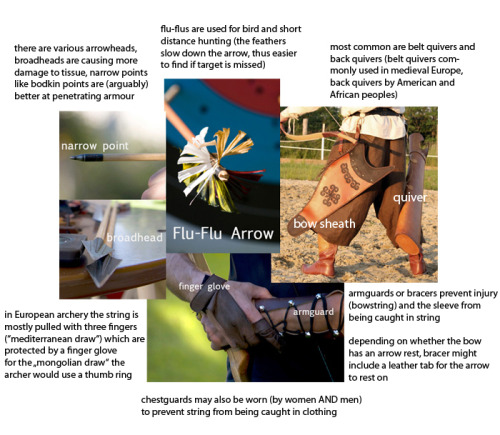
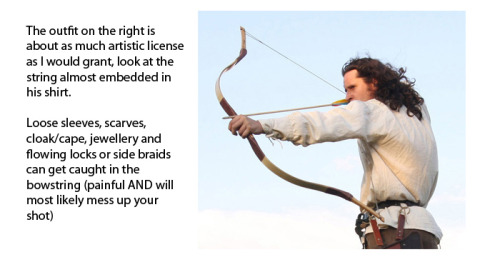
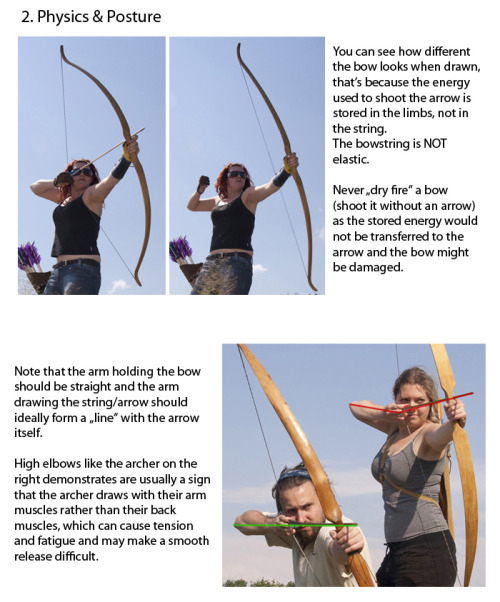

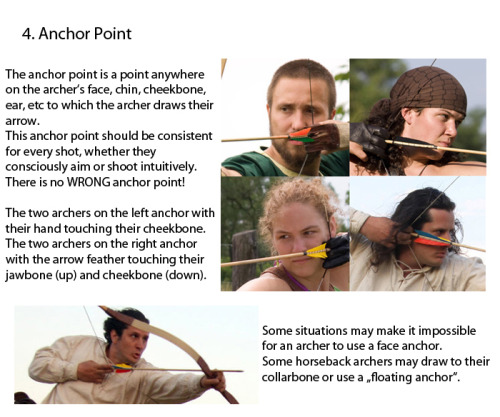
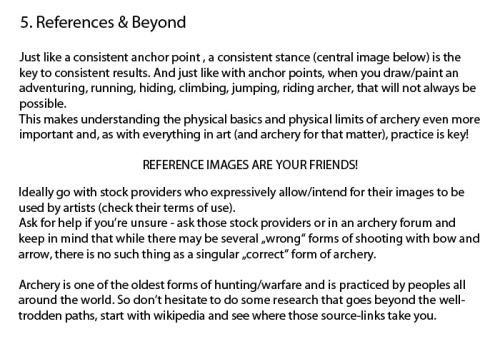
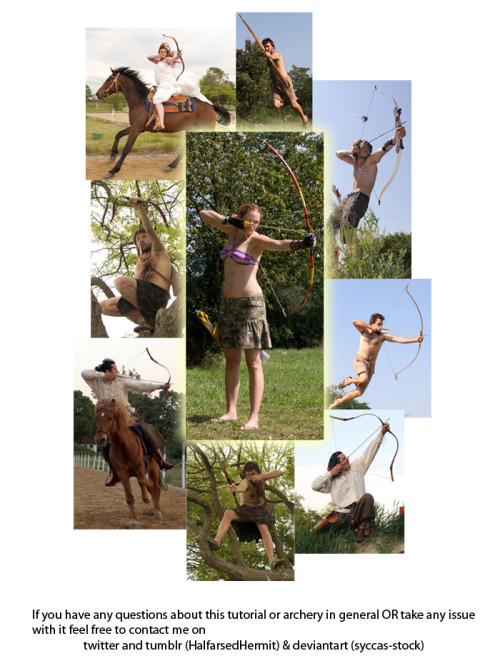
Spent the last two days working on this little archery guide in art and writing. Considering the rise in popularity of archers in pop culture this hopefully comes in handy for a bunch of fandoms.


-
 wishicouldcomeupwithanameforthis liked this · 4 weeks ago
wishicouldcomeupwithanameforthis liked this · 4 weeks ago -
 cozeykitsune18 liked this · 1 month ago
cozeykitsune18 liked this · 1 month ago -
 tantalancstle liked this · 1 month ago
tantalancstle liked this · 1 month ago -
 medicsfag liked this · 1 month ago
medicsfag liked this · 1 month ago -
 krunchycrispy liked this · 1 month ago
krunchycrispy liked this · 1 month ago -
 fantasticalodd liked this · 1 month ago
fantasticalodd liked this · 1 month ago -
 the-awesomeness-of-randomness liked this · 1 month ago
the-awesomeness-of-randomness liked this · 1 month ago -
 taylensworld reblogged this · 2 months ago
taylensworld reblogged this · 2 months ago -
 taylensworld liked this · 2 months ago
taylensworld liked this · 2 months ago -
 themrj8 liked this · 3 months ago
themrj8 liked this · 3 months ago -
 funkyraplegend liked this · 3 months ago
funkyraplegend liked this · 3 months ago -
 shine-box reblogged this · 3 months ago
shine-box reblogged this · 3 months ago -
 ramtuu reblogged this · 3 months ago
ramtuu reblogged this · 3 months ago -
 yeshallnotinsultmypuns liked this · 3 months ago
yeshallnotinsultmypuns liked this · 3 months ago -
 star-buns reblogged this · 3 months ago
star-buns reblogged this · 3 months ago -
 star-buns liked this · 3 months ago
star-buns liked this · 3 months ago -
 grubus liked this · 3 months ago
grubus liked this · 3 months ago -
 andettan-art reblogged this · 3 months ago
andettan-art reblogged this · 3 months ago -
 axolola liked this · 3 months ago
axolola liked this · 3 months ago -
 nezjazz reblogged this · 3 months ago
nezjazz reblogged this · 3 months ago -
 artking-4 reblogged this · 3 months ago
artking-4 reblogged this · 3 months ago -
 whetyourwoman liked this · 3 months ago
whetyourwoman liked this · 3 months ago -
 pfuetzchen liked this · 4 months ago
pfuetzchen liked this · 4 months ago -
 mirthfl liked this · 4 months ago
mirthfl liked this · 4 months ago -
 schizofrenelle liked this · 5 months ago
schizofrenelle liked this · 5 months ago -
 m0ths0ft liked this · 5 months ago
m0ths0ft liked this · 5 months ago -
 numberonekittyking liked this · 5 months ago
numberonekittyking liked this · 5 months ago -
 julchenwife liked this · 5 months ago
julchenwife liked this · 5 months ago -
 revolutionarymerc liked this · 5 months ago
revolutionarymerc liked this · 5 months ago -
 milanguche580 liked this · 5 months ago
milanguche580 liked this · 5 months ago -
 kaitheenbydoesthings liked this · 5 months ago
kaitheenbydoesthings liked this · 5 months ago -
 rfpreiwaphase liked this · 6 months ago
rfpreiwaphase liked this · 6 months ago -
 gravelyhidden liked this · 7 months ago
gravelyhidden liked this · 7 months ago -
 hawtbunz reblogged this · 7 months ago
hawtbunz reblogged this · 7 months ago -
 skeletor-enjoyer liked this · 7 months ago
skeletor-enjoyer liked this · 7 months ago -
 saith707 liked this · 7 months ago
saith707 liked this · 7 months ago -
 diamondnokouzai liked this · 7 months ago
diamondnokouzai liked this · 7 months ago -
 silentstriderhill reblogged this · 7 months ago
silentstriderhill reblogged this · 7 months ago -
 argentinyan reblogged this · 7 months ago
argentinyan reblogged this · 7 months ago -
 nolabird liked this · 7 months ago
nolabird liked this · 7 months ago -
 cosmicsymbols reblogged this · 7 months ago
cosmicsymbols reblogged this · 7 months ago -
 vampirecatprince reblogged this · 7 months ago
vampirecatprince reblogged this · 7 months ago -
 vampirecatprince liked this · 7 months ago
vampirecatprince liked this · 7 months ago -
 sanguinerosie reblogged this · 7 months ago
sanguinerosie reblogged this · 7 months ago -
 reblogliquidstarrr reblogged this · 8 months ago
reblogliquidstarrr reblogged this · 8 months ago -
 mernoid liked this · 9 months ago
mernoid liked this · 9 months ago
Right now this is just anything that comes to mind since I'm a complete noob at tumblr. I've been hearing about it for years but I never really felt like I had anything to say. Well all that has changed now and I figured I'd see what all the hype about tumlr is really about. Anyway don't take anything I say too seriously for now...I'll probably change it later when I become more comfortable with this website.
168 posts